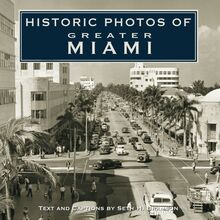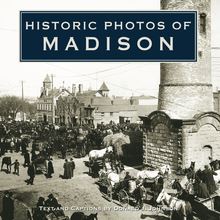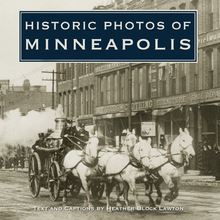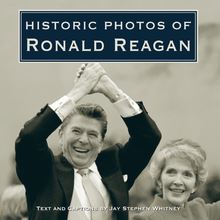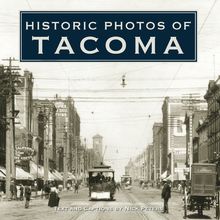Historic Photos of Philadelphia , livre ebook
189
pages
English
Ebooks
2006
Vous pourrez modifier la taille du texte de cet ouvrage
Obtenez un accès à la bibliothèque pour le consulter en ligne En savoir plus
Découvre YouScribe en t'inscrivant gratuitement
Découvre YouScribe en t'inscrivant gratuitement
189
pages
English
Ebooks
2006
Vous pourrez modifier la taille du texte de cet ouvrage
Obtenez un accès à la bibliothèque pour le consulter en ligne En savoir plus
Publié par
Date de parution
01 novembre 2006
Nombre de lectures
2
EAN13
9781618586681
Langue
English
Poids de l'ouvrage
6 Mo
Publié par
Date de parution
01 novembre 2006
Nombre de lectures
2
EAN13
9781618586681
Langue
English
Poids de l'ouvrage
6 Mo
HISTORIC PHOTOS OF
PHILADELPHIA
T EXT AND C APTIONS BY L AURA E. B EARDSLEY
The Main Building was the largest building on the Centennial grounds, and is believed to have been the largest building in the world when it was built. More than 13,700 exhibitors were featured, including manufacturers of clothing, furniture, and medical and scientific equipment.
HISTORIC PHOTOS OF
PHILADELPHIA
Turner Publishing Company
200 4th Avenue North Suite 9
Nashville, Tennessee 37219
(615) 255-2665
www.turnerpublishing.com
Historic Photos of Philadelphia
Copyright 2006 Turner Publishing Company
All rights reserved.
This book or any part thereof may not be reproduced or transmitted in any form or by any means, electronic or mechanical, including photocopying, recording, or by any information storage and retrieval system, without permission in writing from the publisher.
Library of Congress Control Number: 2006933652
ISBN: 1-59652-306-9
ISBN-13: 978-1-59652-306-7
Printed in China
09 10 11 12 13 14-0 9 8 7 6 5 4
C ONTENTS
A CKNOWLEDGMENTS
P REFACE
T HE C ITY OF B ROTHERLY L OVE L OOKS F ORWARD (1840-1879)
B IG B USINESS , B IG P OLITICS, AND B IG P ROFITS (1880-1899)
A T IME FOR W ORK AND A T IME FOR P LAY (1900-1919)
C HALLENGES AND C HANGES (1920-1939)
C ONFLICT AND THE M ATERIALS OF W AR (1940-1959)
D ECLINE AND R EBIRTH (1960-1989)
N OTES ON THE P HOTOGRAPHS
Broad Street looking north from Oxford Street, ca. 1890. To the left is the Columbia Club, one of many men-only social clubs in the city at the turn of the century.
A CKNOWLEDGMENTS
This volume, Historic Photos of Philadelphia , is the result of the cooperation and efforts of many individuals, organizations, institutions, and corporations. It is with great thanks that we acknowledge the valuable contribution of the following for their generous support:
Historical Society of Pennsylvania
Free Library of Philadelphia
Pennsylvania Historical and Museum Commission
We would also like to thank Laura E. Beardsley, author and editor, Max E. Moeller, Laura s husband and Director of Research Services, Historical Society of Pennsylvania, and R. A. Friedman, Rights and Reproductions Department, Historical Society of Pennsylvania, for valuable contributions and assistance in making this work possible.
P REFACE
Philadelphia has thousands of historic photographs that reside in archives, both locally and nationally. This book began with the observation that, while those photographs are of great interest to many, they are not easily accessible. During a time when Philadelphia is looking ahead and evaluating its future course, many people are asking, How do we treat the past? These decisions affect every aspect of the city-architecture, public spaces, commerce, infrastructure-and these, in turn, affect the way that people live their lives. This book seeks to provide easy access to a valuable, objective look into the history of Philadelphia.
The power of photographs is that they are less subjective than words in their treatment of history. Although the photographer can make subjective decisions regarding subject matter and how to capture and present it, photographs seldom interpret the past to the extent textual histories can. For this reason, photography is uniquely positioned to offer an original, untainted look at the past, allowing the viewer to learn for himself what the world was like a century or more ago.
This project represents countless hours of review and research. The researchers and author have reviewed thousands of photographs in numerous archives. We greatly appreciate the generous assistance of the archivists listed in the acknowledgments of this work, without whom this project could not have been completed.
The goal in publishing this work is to provide broader access to this set of extraordinary photographs that seek to inspire, provide perspective, and evoke insight that might assist people who are responsible for determining Philadelphia s future. In addition, the book seeks to preserve the past with adequate respect and reverence.
With the exception of touching up imperfections that have accrued with the passage of time, no other changes have been made. The focus and clarity of many images is limited to the technology and the ability of the photographer at the time they were recorded.
The work is divided into eras. Beginning with some of the earliest known photographs of Philadelphia, the first two sections record photographs from before the Civil War through the end of the nineteenth century. The third section spans the beginning of the twentieth century through World War I. Section Four moves from World War I to World War II. The last sections cover the World War II era to the recent past.
In each of these sections we have made an effort to capture various aspects of life through our selection of photographs. People, commerce, transportation, infrastructure, religious institutions, and educational institutions have been included to provide a broad perspective.
We encourage readers to reflect as they go walking in Philadelphia, strolling through the city, its parks, and neighborhoods. It is the publisher s hope that in utilizing this work, longtime residents will learn something new and that new residents will gain a perspective on where Philadelphia has been, so that each can contribute to its future.
- Todd Bottorff, Publisher
Washington Square is one of five park squares incorporated into Thomas Holmes original plan for the city. At one time used as a cemetery for the victims of disease and war, the square is now one of Philadelphia s popular neighborhood parks. The town homes at the center of the photo, seen ca. 1870, are still occupied as private residences.
T HE C ITY OF B ROTHERLY L OVE L OOKS F ORWARD
(1840-1879)
As one of America s oldest cities, Philadelphia has enjoyed a long and often successful history. First settled by the Dutch as early as 1609, it was officially established in 1681 by Englishman and Quaker convert William Penn. Founded on the doctrines of the Quaker faith, the city grew quickly due in great part to its reputation for religious freedom and seemingly endless economic possibilities. Its geographical location at the center of the original thirteen colonies in combination with well-established shipping and trade routes along the Delaware River proved to be an advantage to the city.
In 1774 and 1775, Philadelphia served as host to the First and Second Continental Congresses, the colonial assemblies which ultimately led the colonies through the creation of the Declaration of Independence and the trials of the Revolutionary War. In 1787 it was home to the Constitutional Convention, which drafted the United States Constitution, and from 1790 until 1800 the city was the capital city of the newly organized United States of America. By the end of the eighteenth century, Philadelphia was the premier city in the nation, home to leading national politicians, artists, scientists, and an estimated population of more than 67,000 people.
By the mid-1800s the venerable City of Brotherly Love was still revered as the birthplace of the nation but had lost its place as the leading city. In the midst of great tension and change, and increasingly at the mercy of rioting factions, devastatingly regular cholera epidemics, and a growing disparity between the wealthy and the poor, Philadelphia s future seemed bleak. But the city remained a place of great industry, beauty, and culture as reflected in the growth of small businesses, the creation of Fairmount Park (still the largest urban park in the world), and the availability of a wide variety of theaters and museums.
The consolidation of the city in 1854 united independent municipalities of nearly thirty townships and boroughs in the county and created America s newest great city. The Civil War brought economic opportunity in the form of an increased demand for products such as textiles and ships, both leading industries in Philadelphia. This period of growth culminated in the grand celebration of the 100th anniversary of the Declaration of Independence in 1876. Known formally as the International Exhibition of Arts, Manufactures, and Products of the Soil and Mine, the Centennial Exhibition featured exhibits highlighting the preceding 100 years of American ingenuity and the potential for industrial greatness in the years to come.
North 7th Street
Bullock and Crenshaw s Drug Store and Chemical Warehouse, northeast corner of 6th and Arch streets, ca. 1850
Seen here ca. 1855, the Pennsylvania State House and Congress Hall served as the home of the federal government during the period 1790-1800 when Philadelphia was the nation s capital. The Bill of Rights was ratified by members of Congress in Congress Hall in 1791. The State House became popularly known as Independence Hall as a result of the celebration of the 50th anniversary of the Declaration of Independence during the 1820s.
Photographed ca. 1856, this warehouse located at Delaware Avenue and Race Street was constructed of English bricks and timber in 1795. The second floor was used as a sail loft, one of Philadelphia s earliest and most important industries because of the city s status as a major port. Designed with an open plan, a sail loft was used to spread out canvas sails for manufacture and repair. The building was demolished in 1900.
Donnelly s Hotel, 4th Street at Pine Street, ca. 1860
Located at the northwest boundary of the city, Chestnut Hill would become one of the premier neighborhoods in the city by the end of the 1800s. Residents enjoyed the country-like views combined with the easy availability of two commuter train lines into the city. This is an early view of the area, ca. 1860.
Arch Street Theater, 6th and Arch streets, ca. 1860
Located on the Delaware River just south of the city, the Lazaretto was originally built in 1799 to serve as a quarantine st






